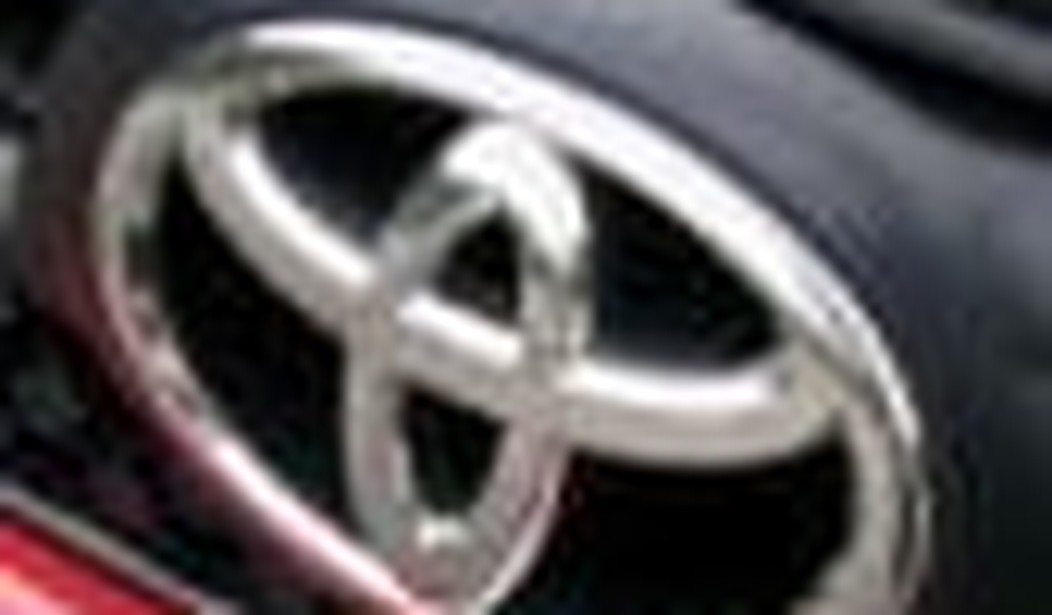On Sunday, Toyota learned what it was like to be one of Detroit’s Big Three in the days before they hit upon hard times and Uncle Sam formally entered the car business.
Some are treating what Toyota is going through in its fight to deal with the gas pedal- and floormat-related sudden acceleration issues raised by consumers and the government as a bit of a justifiable payback. After all, they argue, the company received kid-glove treatment from car quality reviewers for so many years, perhaps well after they truly deserved it.
To a small degree, they may have a point. Even before Japanese transplants Honda, Toyota, and Nissan began making cars in the U.S., there seemed to be a bias against Big Three cars in magazines like Consumer Reports. Prodded largely by its Japanese competitors, Detroit had left the worst of its quality problems behind by the mid-1980s and generally began making very good cars, while quality reviewers occasionally seemed a bit over-enamored with foreign makers, particularly Honda and Toyota — companies which, despite their own very large size, were somehow perceived as underdogs to the big, bad Big Three.
I believe that Detroit has significantly narrowed the quality differences between its and others’ output to the point where in most cases it lags by so little that it’s virtually unimportant. However, the public’s perceived quality difference between Detroit and foreign makers, even of foreign makers’ U.S.-manufactured models, is far wider than it should be.
But one of the big reasons for that perception gap has to do with how the hard-news press, with substantial assistance from the plaintiffs’ bar, treated the Big Three during previous decades.
Yes, to name just a few examples, Ford Pintos had serious problems with exploding gas tanks. Yes, GM equipped some of its vehicles with transmissions that turned out to be suitable only for the flattest of terrains, and a few of its cars and trucks would pop into drive while idling. Yet as much as the tort bar would like to convince pliable juries that big companies, except for their unwillingness to spend a little money, can achieve perfection with every product that comes off the assembly line, it just isn’t so.
The legal and media narratives in many of the lawsuits that arose from these and other matters almost inevitably morphed from “the company made a serious mistake and should pay for it” to “this evil company and its evil executives were perfectly okay with seeing people continue to die, so they need to be sent a message and empty their coffers as punishment.” Meanwhile, at least until the late 1990s, trial lawyers tended to leave foreign makers alone, at least partially because U.S. CEOs supposedly imbued with excessive capitalist greed made better targets for sympathetic jury verdicts than supposedly less corrupt and more accommodating foreigners.
But going after the Big Three, or at least two of them, isn’t what it used to be. During the last half of the decade, the financial viability of each was often in serious question. Now that the government has effective control of GM and Chrysler, any trial lawyer trying to go after either now knows that he or she will be facing a defendant backed by potentially unlimited resources and with lots of potential dirty tricks up its sleeve — tricks that it didn’t hesitate to use during the two companies’ respective encounters with bankruptcy.
Thus, that Toyota would eventually become a target of choice is not surprising.
Let’s be clear: If the company is proven to have seriously erred and knowingly compromised driver and public safety, it should be made to pay an appropriate price. The developments of the past weekend, though, seem much more sinister, supporting the idea that the goal of many critics is really to drive the company’s public perception, and perhaps the company itself, into the ground.
On Sunday, the Detroit News “somehow” got its hands on an internal company presentation from June 2009 that had been handed over to congressional investigators. The News’ David Shepardson, who seems not to have even recognized that the 10 pages he received did not comprise the entire presentation (uh, the broken page number sequence of the documents sort of gave that away, Dave), reported that the presentation’s sterile wording somehow shows that the company had “bragged” about saving money on recall costs. The Associated Press’s Ken Thomas, whose go-to word was “boasted,” picked up on that theme with amazing speed. By late Sunday, the theme had become a meme in the establishment press.
There’s only one problem, which anyone familiar with Japanese culture would recognize: it frowns so harshly on bragging that it almost never happens. If you’re an American making a presentation to a Japanese executive, which was the situation in this case, you don’t brag either — at least if you think you have a future with the company. Even the word “win,” which was employed several times and which Shepardson and Thomas relied on as evidence of gloating, only means “favorable development” — and most certainly not “victory” — to the Japanese.
Monday brought news that Toyota’s government and activist opponents are piling on to a degree the Big Three may never have experienced, as “federal prosecutors have launched a criminal investigation into the company’s safety problems and the Securities and Exchange Commission was probing what the automaker told investors.” I don’t recall any Big Three executive or employee being subjected to a criminal trial relating to a product liability problem, but that possibility now appears to loom at Toyota — just in time to rattle its executives ahead of their congressional testimony.
Finally, it’s more than a little interesting that Department of Transportation spokesperson Olivia Alair was available on Sunday night to tell the press that the Toyota presentation in question was a “very telling” indicator that the company might be placing its bottom line ahead of safety. What’s really “telling” about the kind of people Toyota faces is that as Barack Obama’s Ohio campaign director in 2008, Alair registered to vote in the Buckeye State even though she doesn’t live there, and was apparently ready to cast an election ballot until a county prosecutor threatened to drop felony charges on her and 12 other Obama campaign workers.
I do hope that the folks at Toyota fully appreciate the ugliness they’re up against.









Join the conversation as a VIP Member